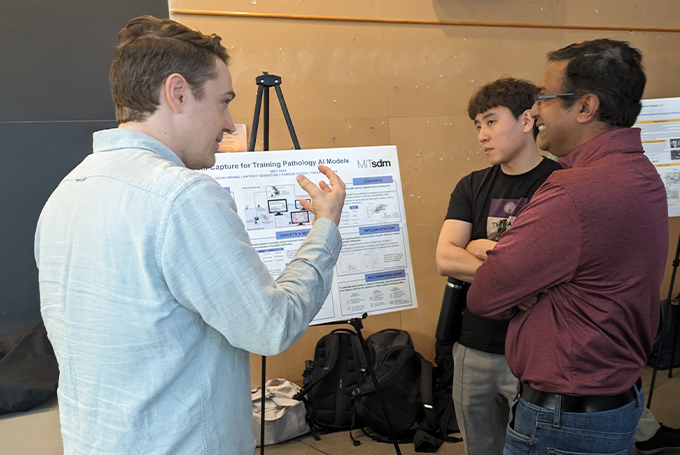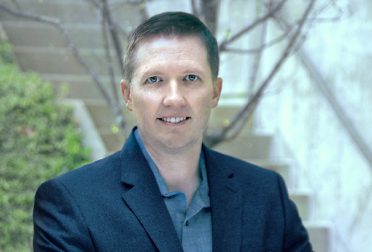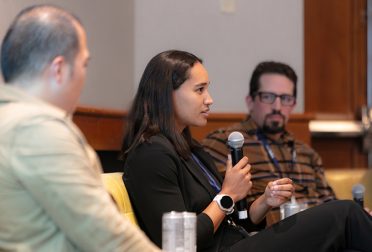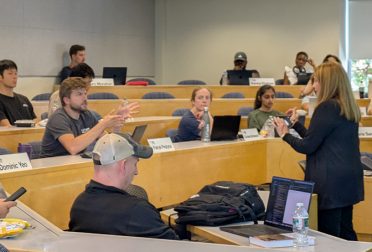At MIT System Design and Management, one of our strongest assets is our network of project partners. These organizations include non-profits, companies, and governments, who come together each year in January to propose challenges based on complex issues they encounter in their work. With the support of project mentors and executive sponsors, SDM’s team of faculty and staff create a learning experience for the spring semester in which first-year students apply principles and tools taught in the core class as well as learning from these experts in their fields.
Some of our project partners are SDM alumni, who return to support new cohorts while also bringing value back to their organizations. Current students have the opportunity to work with a partner who’s already familiar with the program pillars of systems engineering, system architecture, and project management. And alumni reconnect with the program and learn about the latest updates to the fields taught in the core class.
Brendan Horton SDM ’19 still uses concepts such as Pareto ranking in trade spaces for his work at Chevron. He partnered with two teams this year, one of which tackled the logistics of moving workers between the mainland of Angola and various offshore oil rigs and platforms and compared cost and time tradeoffs. Brendan’s own experience as a student showed him the utility of the spring projects. “In the core courses, you’re really focused on theory, justification and reasoning. The spring project offers a great opportunity to reconnect with the actual implementation,” he said. Andrew Grabowski SDM ’23, one of the students working on the Angola passenger project, appreciated having a project partner who understood how to craft a project that could be useful to the company as well as integrating with the students’ education and the schedule of project deliverables. Andrew said, “Brendan understood the difference between what Chevron was looking for, and the opportunity sets,” SDM’s name for the weekly homework assignments.
Ricardo Hopker SDM ’20 found it helpful to be able to translate the concepts taught in the core class back to his team at Shell as they worked with the students. He served as a project partner for a team in 2023 that investigated the delivery of consistent 24-hour clean energy to large industry partners. The student team applied systems engineering techniques such as using Monte Carlo simulations to represent quantifiable uncertainty in the trade spaces. When his team at Shell were interested in this process, Ricardo was able to explain the technique based on his own knowledge from completing the SDM core.
Project partners can also benefit from receiving new ideas through working with students from a variety of industry backgrounds. Chris Garcia SDM ’15, medical director of computational pathology and artificial intelligence at the Mayo Clinic, has served as a project partner more than once. This year, his team of students had no prior experience in medicine. He found that the students were able to bring novel perspectives to their exploration of methods for capturing and using data from the digital pathology process. “Our team was so impressed by seeing smart, engaged people with backgrounds in mechanical engineering, systems engineering, and electrical engineering tackle a project and make sense of it,” he said. “People see the value in the cross-disciplinary sharing of tools and insights.” Ricardo found similar value in working with students who had backgrounds in agricultural technology as well as clean energy to propose possible energy delivery systems. “Not every system in the system-of-systems is an energy system,” he said. “You just need deep enough knowledge in various domains, and that’s what the variety of people in SDM brings.”
While the primary goal of the spring projects is educational, project partners have also seen tangible results from the students’ work. Brendan found that the transportation solution proposed by the students for moving workers between platforms and the mainland would potentially save millions of dollars in transit costs. “It’s going to influence our decision next year, and we make these budget decisions every year,” he said. Similarly, Chris has worked on multiple projects with SDM students and found that there were lessons learned at the Mayo Clinic from both projects. “Last year’s results turned directly into an operational project, and this year we had major takeaways that our group did not know before the students did their work,” he said. “Those lessons were very valuable for us.”
Working with alumni as their project partners benefits the current students as well. “It was good to know the project wouldn’t just sit on his hard drive forever,” said Andrew of working with Brendan and hearing about the tangible effects of their work. And Chris found an additional benefit to working with the students beyond the project outcome. “As new methods and tools and approaches get developed and taught within SDM, this is a way for me to learn and to catch up on those, because I see what the students are doing,” he said. “Sometimes I would say, ‘Walk me through that. I’m not familiar with it.’ It’s a way for me to keep engaged, continuing to be educated.”




